"Communicating Through Visuals: Information Visualization in the Video Game Industry" and White Paper explanation(study, 2012)
Relatively self-explanatory, this was a lengthy, half-semester-long activity, done by a group, regarding information visualization in the gaming industry and the feasibility of employment in the technical field as it relates to communication. The project was part of a Visual Rhetoric course taken in late 2012. The only disclaimer is that it is one (of a set of two) that was done by a group and, therefore, may have varying degrees of quality across the project's broad scope and many facets. Embedded below is the final version of the work itself, "Communicating Through Visuals: Information Visualization in the Video Game Industry" and, below that, is the white paper which is a sort of element-by-element breakdown of the process.
Rhetorical Situation:
The purpose of this white paper and other deliverable is to inform other students in this Visual Rhetoric class about the job market of the video game industry and methods of visual rhetoric used by them. Our audience is the students in this class and rest of the program who wish to seek employment in the technical writing field after graduation. This paper shows one particular field of writing in the video game industry that can bleed into other forms of technical writing, if needed. This field is a fast growing and niche market that offers many different positions and opportunities to branch out into other departments regarding video game design and storyboarding.
Types of Speech:
These texts are making deliberative arguments. We started with one narrow idea and then expanded by asking ourselves questions about the type of technical communication that is done in the video game industry. After much questioning and research, we ultimately ended up choosing specifically the software developer field as the area we would concentrate on. As covered in the implications, our career choices may have been swayed by the plethora of information available on the technical communication field within the gaming industry. Additionally, we cover the implications for USF major and discuss possible options for coursework in the future.
Proofs/Rhetorical Appeals:
The intention for these deliverables is to be informative and is logical - Logos. Defined by Ehses and Lupton as an appeal that “addresses an audience’s respect for controlled, logical thinking”(1988). We gathered information from different sources in order to figure out exactly what is available throughout the video game industry as far as technical communicators are concerned. Our deliverables can be viewed to get a sense of what types of jobs in this field are available for professional writing graduates.
Rhetorical Figures/Figures of Speech
Within our project, the use of alliteration is immediately present. Defined as something that “repeats the initial parts of elements in a sequence” (Ehses and Lupton, 1998), our white paper states then repeats concepts, in different ways, to make them more understandable. In addition, amplification became one of the main tropes. Throughout the project, our group details the process of research (methodology) and draws conclusions. This in-depth examination of an argument aided in the overall persuasiveness of the researched topic.
Principles of Graphic Design:
When deciding on what type of table our group could use to graphically represent data, we immediately went to Show me the Numbers to decide what would be effective and what wouldn’t be as effective. In our Analysis and Results section, we depicted a table that shows employment figures within the U.S. Software Publishing Industry. As cited in the White Paper, we followed Few’s recommendations to include a ratio in order draw attention to positive or negative percentage changes within the industry.
During the design process of the Poster, as well as the handout, we drew upon White Space is not Your Enemy to provide us with layout advice. Deciding on where to put center-of-attention visuals on both the poster and the handout were decisions that we made first, since Golombisky refers to the focal point as “the most important thing visually on any layout. . . the focal point is the center of attention in the design or layout”(2010). In addition, we also struggled with what an appropriate type would be to communicate our argument. For the handout, we chose an approachable font while using a font that depicts all caps for the headers. Since the caps were small-caps, we didn’t find that it interfered with the visuals readability (Golombisky, 2010), which is something explicitly warned against in the text.
InDesign:
InDesign definitely helped when creating most of the layouts for these documents. For the handouts, we were able to recall and revisit past assignments to get ideas on formatting it. Positioning the pictures behind the text was somewhat complicated due to the contrast between the colors, but after using colors that aren’t similar in hue, we were able to easily position the words over the pictures and not have any problems.
References
Ehses, H., & Lupton, E. (1988). Rhetorical Handbook.
Few, S. (2012). Show me the numbers. designing tables and graphs to enlighten. (2nd ed., pp. 15-21). Burlingame, CA: Analytics Press.
Golombisky, K., & Hagen, R. (2010). White space is not your enemy. A beginner’s guide communicating visually through graphic, web & multimedia design. Mini art school, 5,50-51;8,94-95.
